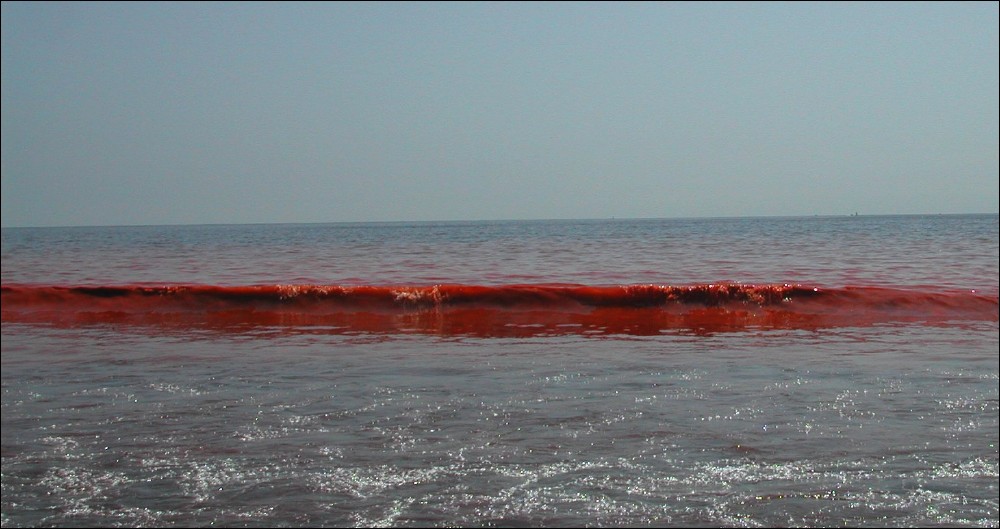
The last time a severe Red Tide erupted in Gansbaai was in 2005, and it brutally influenced the fishing industry in our region.
On Monday, 19th January 2014, there was a sighting of Red Tide just off the coastline along Danger Point. Outbreaks like these happen periodically along the Southern African coastline.
What is a Red Tide? A Red tide is not always red in coloration, but varies from brown to orange, purple and yellow. The discoloration is caused by dense concentrations of microscopic plants, mostly dinoflagellate phytoplanktons, its pigments, size and concentration, time of day and angle of the sun.
Red Tide usually occurs along the Cape coast late Summer and beginning of autumn. Prevailing southerly winds bring in cold, nutrient-rich water from the deeper regions to the surface, a process known as upwelling. Dinoflagellate cysts, the resting stage of this organism which usually lies dormant on the seafloor, are carried to the surface with the upwelling. The rapid increase in dinoflagellate numbers, sometimes to millions of cells per litre of seawater, is what is known as a "bloom" of phytoplankton. Concentration of the bloom by wind and currents, as well as the dinoflagellates' ability to swim to the surface, together lead to the formation of a “red tide”.
Dense concentrations of red tide organisms can suffocate fish by clogging or irritating their gills, so that they cannot extract sufficient oxygen from the water. During 1962 the mortality of more than 100 tons of fish in False Bay was attributed to gill clogging by the dinoflagellate Gonyaulax polygramma.
Red tides may also kill indirectly by depleting the oxygen dissolved in the water. The mass mortality of the red tide organisms once the nutrients have been depleted results in an increase in the number of bacteria which are responsible for decomposition in the sea. The activities of this huge population of bacteria soon deplete the oxygen concentration in the water, leading to the death of other marine animals.
In March 1994, South Africa experienced its worst recorded marine mortality in the west coast area of St. Helena Bay. Approximately 60 tons of crayfish and 1500 tons of fish, comprising about 50 species, washed ashore. The mullet, Liza richardsnii, made up the bulk of the fish mortality (1250 tons) with the remainder being dominated by sharks, and bottom-dwelling fish. Along the bay’s rocky shores, most of the mussels, limpets, sea urchins and other intertidal life had died, with the exception of the false limpet, Siphonaria capensis, which is capable of switching to anaerobic metabolism in the absence of oxygen.
Animals such as mussels, clams and oysters are particularly vulnerable to red tides, because they feed by filtering particles, including phytoplankton, from the water. Toxic phytoplankton accumulate in the digestive system of these filter-feeders and subsequently cause illness or death to consumers such as birds, marine mammals and man. This category of red tide is the one which the public is periodically warned about. It should be remembered that cooking only slightly lessens the toxicity of affected shellfish because the toxins are generally heat stable - in other words, they are not destroyed by heat. However, most cases of poisoning are restricted to filter-feeding shellfish, and other seafood may be consumed safely.
For more information please visit www.botany.uwc.ac.za
We would like to urge the public to please inform us of any fish strandings and mortalities in the Overberg – at 082 907 5607, or via email at office@dict.org.za.
Gansbaai Courant provides the Gansbaai community with the latest in news and interesting stories about and around the area.
View Profile
What is Xplorio?
Xplorio is your local connection allowing you to find anything and everything about a town.
Read More












